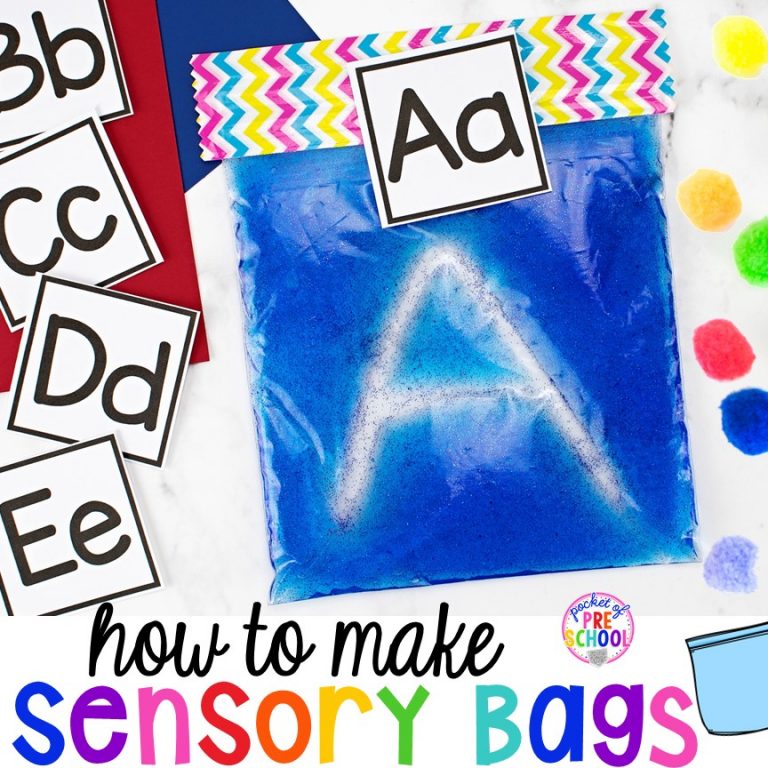How and Why to Use Play Dough Trays in Preschool, Pre-K, & Kindergarten Classrooms
Share This Post:

I use play dough trays every day in my classroom, but many teachers don’t know how or why to use play dough trays in their kindergarten, pre-k, or preschool classroom. So, I have put together this post to share all the benefits, all the hows, and all the tips to make your play dough trays a success in your room.
Grab the FREE play dough tray guide for over 60 ideas of play dough trays for your preschool pre-k, or kindergarten room!
This post contains affiliate links which means I earn a tiny commission when you use my links at no cost to you.
Benefits of Play Dough Trays
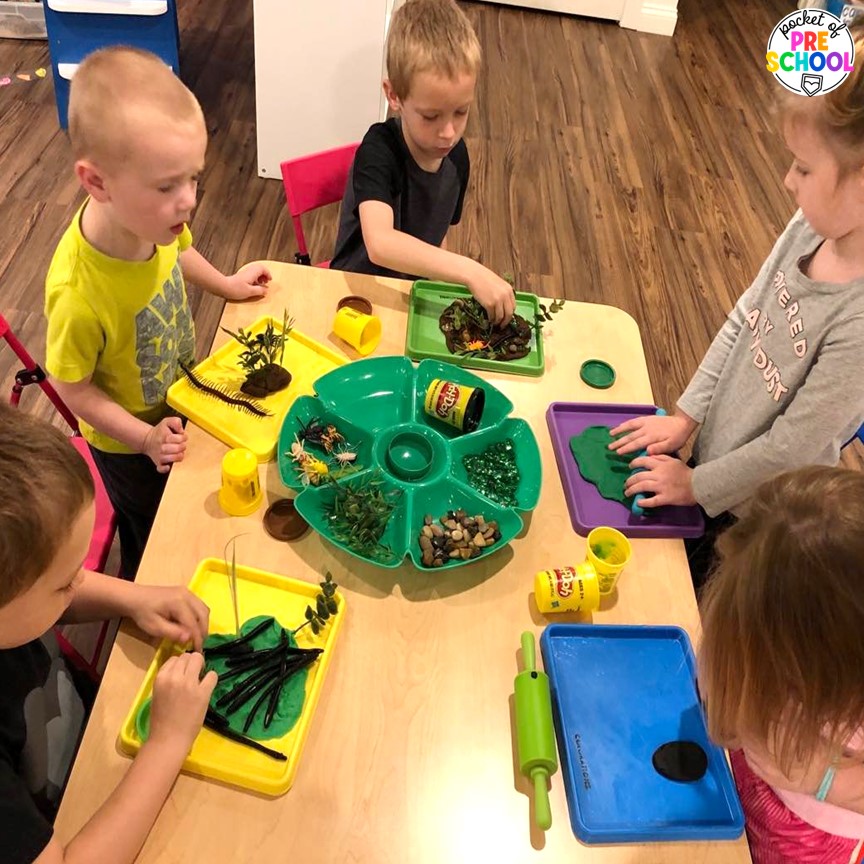
Play dough trays are an open-ended, invitation to play and explore using the items provided on the tray, usually around a theme or specific topic.
Why you should do them:
- Multi-sensory and PLAY based
- Students will be interacting, playing, and learning together
- Integrates the arts!
- Calming and relaxing for students
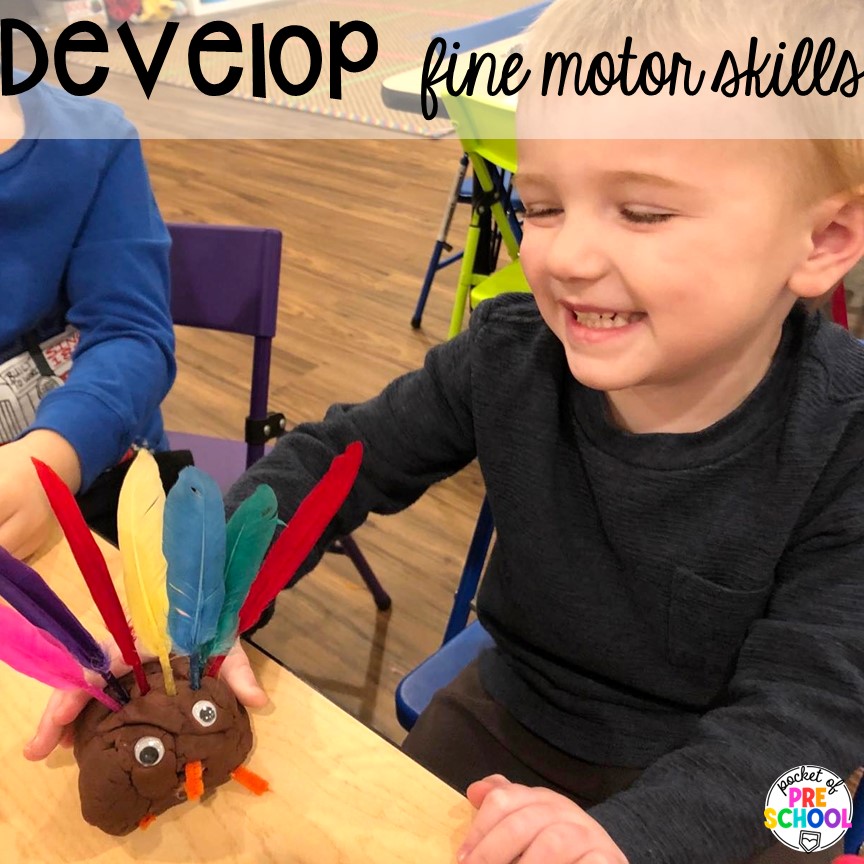
Develop fine motor skills! Students will strengthen their muscles in their hands and upper body while playing with play dough. Fine motor muscles are the little muscles in the hands that help children use tweezers, hold a pencil, and have better handwriting skills. Gross motor muscles are the larger muscles in the body like the shoulders, wrists, and core. These are vital for little learners to develop, as well, because they must have strong big muscles to have strong little muscles.
- Gross motor skills
- Upper arm and shoulder dexterity
- Fine motor skills
- Overall hand, wrist, and finger strength
- Hand-eye coordination
- Scissor skills
- Bilateral integration

Develop social skills! Young children are learning the social skills needed to be successful later in life. I like to give students opportunities to build social skills while they are engaged in a fun, hands-on activity. Playdough trays make the perfect tool to encourage oral language and social skills development.
- Imagination and creativity
- Problem-solving skills
- Social skills
- Sharing
- Taking turns
- Waiting
- Self-regulation
- Self-help skills
- Oral language

Develop so many necessary skills! Play dough trays can be used to develop other skills in the classroom like vocabulary, measurement, or a specific skill that you are focusing on.
- Independent & cooperative play
- Vocabulary
- Exploring measurement and spatial awareness
- The specific literacy, science, or math skill or objective for the activity

Mini Assessments! I use my play dough trays for mini assessments of student knowledge and understanding of the theme or skills we are focusing on during that time. In the photo above, I could see that this student learned that there are husks on corn, that pigs like mud, and that the other animals prefer grass. For the vegetables, the students put the vegetables in the playdoh because they grow on top of the ground and she laid the carrots down because they grow under the ground. Then, take a photo and put it in your child’s portfolio to show growth.

How to store your trays and tools. Create a place in a center for a play dough tray. Use it for a table time, arrival activity, or slow start activity to start the day. I like to offer one every day during center time too. If using homemade playdough, use slider baggies. The regular zipper baggies are hard to close for little learners.
- Pink arrow: Play dough tray on the self and changes with the learning theme. I like to use these chip and dip trays from the dollar store, or you can find them here.
- Blue arrow: Tub of typical play dough tools.
- Yellow arrow: Trays on shelf (each student can create on their own tray for easier clean-up) The trays on the right are from Target but are only available at certain times of the year. The trays on the left can be found here on Amazon. Keep the student trays next to or under the play dough activity tray. When students get out the play dough tray, they will see the student trays and remember to grab one for play.
I have small trays for students to create their sculptures on. It gives students their own space to create and clean up. It also helps with the tiny crumbs that sometimes come off or small pieces. The lip of the tray keeps it on the tray instead of the floor.

Traditional Play Dough Tools! I keep these play dough tools out all year and students can use them any time. The playdough cards are part of my play dough activity unit. You can find my favorite play dough tools for little learners in this blog post.
- Rolling pins
- Cookie cutters
- Pizza cutters
- Plastic knives
- Various utensils
- Spatulas
- Scissors
- Potato Smasher
- Garlic/lemon press
The first few weeks of school or when you add play dough trays to your classroom, do a play dough tray activity for small group. Teach the routine, talk about sharing the supplies, and how to clean up. This will make a HUGE impact. Teach it just like you would any other classroom routine or important skills in the classroom.
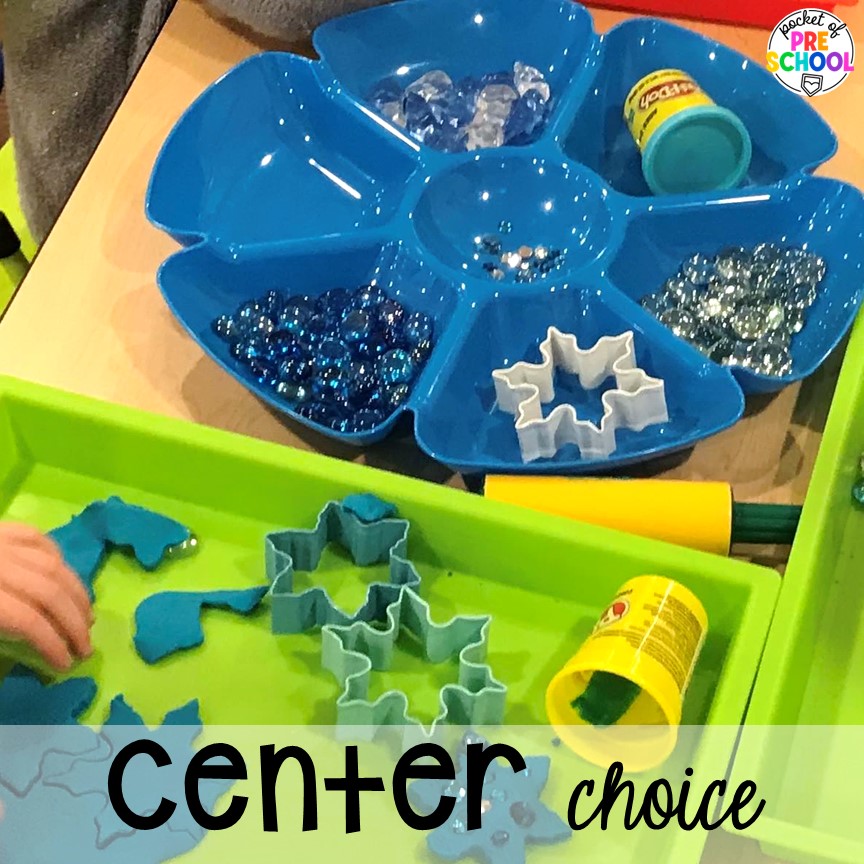
Center Choice! You can use play dough trays for table time, arrival time, or soft start to your day. I also like to leave a tray out in the art center or play dough center and let students go there whenever they want. They are a great way to give students something to work on while other students are still arriving.
- Place a play dough tray in the middle of the table
- Place a tray at each chair for students to create on
Once students are finished or it’s clean-up time. The sculpture students created is taken apart, items are sorted back on the tray, and the play dough is put away in the container or baggie. Practice cleaning up during back to school or when you add play dough trays to your classroom.

Types of Play Dough! You can make your play dough trays more inviting by adding scents or textures! This is a fun way to add more sensory!
- Use store-bought or homemade play dough.
- You can add spices, baking extracts, Kool-Aid, pudding or Jell-O mixes, or essential oils to the play dough to make it smelly!
- Add oregano for pizza dough!
- Add pumpkin spice to make pumpkin play dough!
- Add lemon extract to make lemonade play dough!
- Add cinnamon to make a fall-themed dough.
- You can add mix-ins for texture!
- Add sprinkles to make birthday cake dough!
- Add glitter to make it sparkly.
- Add items from nature, like flower petals or sand!

My favorite play dough trays! I love these chip and dip trays for play dough trays. They have tons of room for lots of manipulatives and your play dough. You can find them here on Amazon or at your local dollar store.

Play Dough Tray Manipulatives! Use tiny treasures and manipulatives you have in your classroom to match your learning theme to make the activity more engaging for students. Many of these items can be found at the dollar store or in your classroom supply closet. Don’t go out and buy all new things; most likely, you have these items in your art, sensory, or manipulative cabinets!
- General Manipulatives
- Mini erasers
- Gems
- Beans
- Googly eyes
- Beads
- Buttons
- Pom poms
- Cut-up pipe cleaners
- Small blocks
- Feathers
- Counters
- Vehicles
- Animal figures
- People figures
- Sticks (real or popsicle)
- Small rocks
- Seeds
- Small shells
- Fake/real leaves
- Flower petals
- Pinecones
- Tree rings
- Uncooked pasta
- Math Manipulatives
- Magnet numbers
- Number beads
- Number rubber stampers
- Number tiles
- Translucent numbers
- DIY number manipulatives
- Dice
- Magnet chips
- Dominos
- Chains
- Shape buttons
- Pattern blocks
- 3D shapes
- Pipe cleaners
- Literacy Manipulatives
- Dough Stampers
- Letter beads
- Letter rubber stampers
- Letter tiles
- Letter dice
- Translucent letters
- Magnet Letters
- DIY letter manipulatives
- Sound magnets
- CVC magnets

Add scissors! Adding scissors is a great idea to help students develop even more fine motor skills. They love cutting play dough instead of paper. If you don’t have play dough scissors, you can use regular ones and wash them in the dishwasher or soak them overnight for easy clean up.

Add smaller trays! I like to add smaller trays, bowls, or pans to my play dough trays to give students another area to expand their curiosity. Silicone trays work great because they are flexible and easy to clean. This allows your kids’ imaginations to run even more wild.

Smaller tray ideas! Here are some of my favorite smaller trays to add to your play dough trays or sensory table.
- Small baking pans
- Small cups or bowls
- Silicone-themed trays
- Ice cube trays
- Candy boxes
- Pop its
- Cupcake liners
- Plastic eggs
- Trays

Add counters! Adding counters to the play dough trays is a simple way to incorporate your theme, have something easy to clean, and use what you already have in your room. Students can work on sorting, counting, and more.
Math and Science Play Dough Activities

Explore counting concepts! Students can make creations with the play dough and then add manipulatives to focus on math skills. In the above photo, students are making cupcakes, then adding a number candle and counting single candles to match. They are working on counting, one-to-one correspondence, and number identification.

Addition mat! Need to make your activities harder? Add printables and give your students an addition challenge. They can count out the matching addends and complete the sum. This would also work with subtraction practice.

Explore sorting! Give students a fun and engaging play dough activity to sneak in sorting skills. Your students will love using their little manipulatives to create and sort a scene to match a theme.

Explore science concepts! Students can explore science and nature with some play dough and manipulatives. I provided real photos so students could see what they were creating and then gave them different materials from nature.
Literacy Ideas for Play Dough Trays
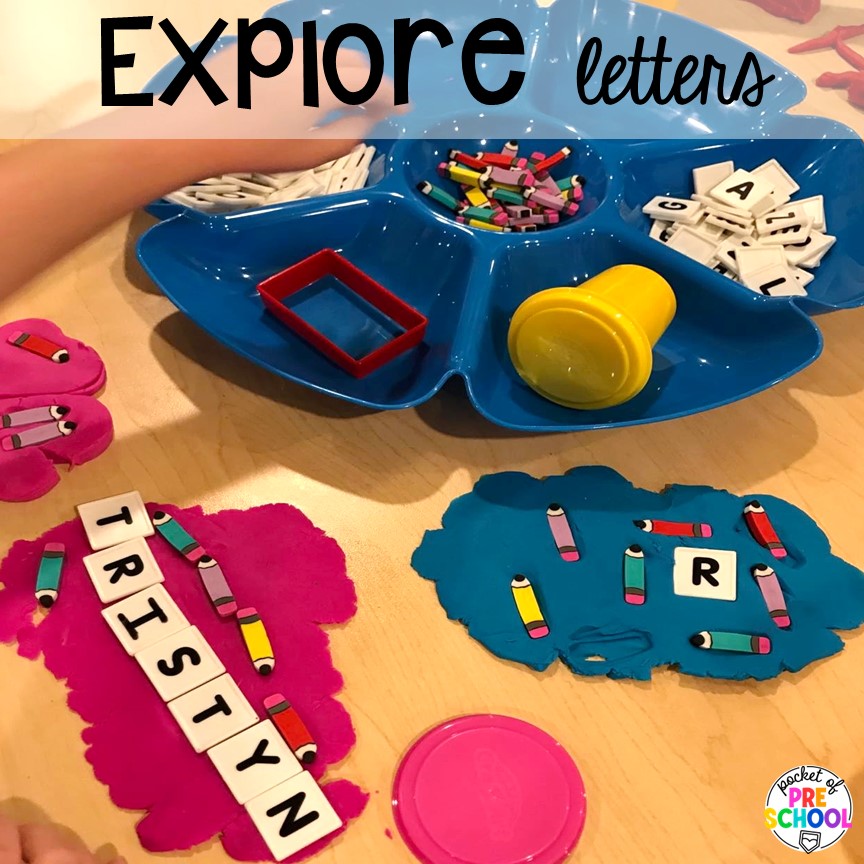
Explore letters! Students can explore capital and lowercase letters and literacy skills with some play dough and manipulatives. They can practice letter identification, sight words, names, and more.

Build words or names! Playdough makes a great tool for practicing sight words or names. They can use letter stamps, letter manipulatives, or cookie cutter letters to spell their words and make learning fun!

Add printables! You can add printables or task cards to amp up your play dough trays. They are also a great addition if your admins aren’t on board with play dough trays. It is an easy way to show the skills you are learning on top of all the other great things they are developing.
There are so many benefits to play dough trays in your preschool, pre-k, and kindergarten classroom! I keep one out all the time and find that there is always at least one student to visit the tray every day. If you need ideas for play dough trays for each theme, season, and holiday, check out the FREE play dough tray guide!
Need some letter playdough mats? Use play dough mats for little learners!
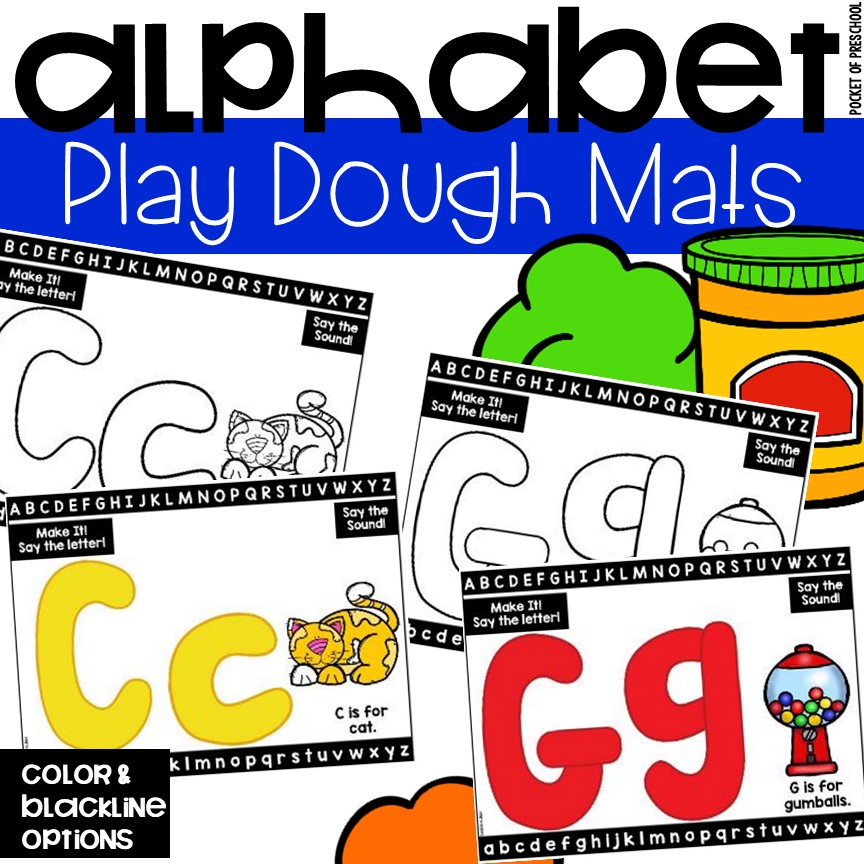
Check out this post with 60 play dough tray ideas for the whole year!
Check out this video for more information about play dough trays.
Love these ideas? Pin this image!

hey, i’m jackie!
I’m Jackie, your go-to girl for early childhood inspiration and research-based curriculum.















